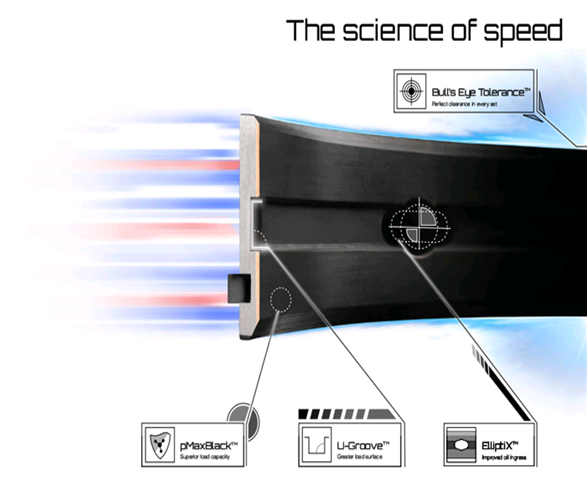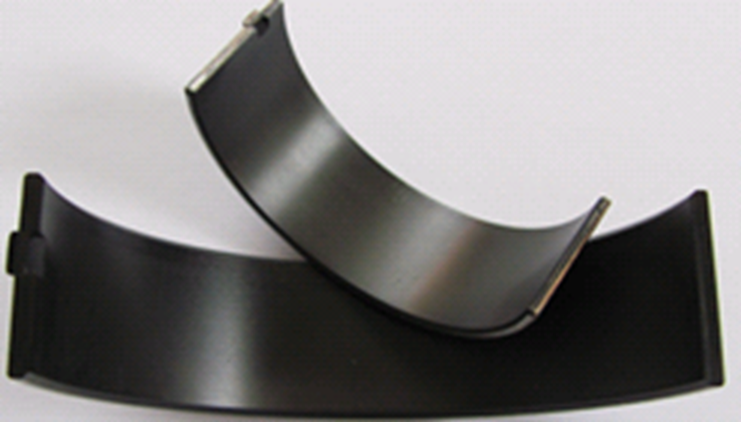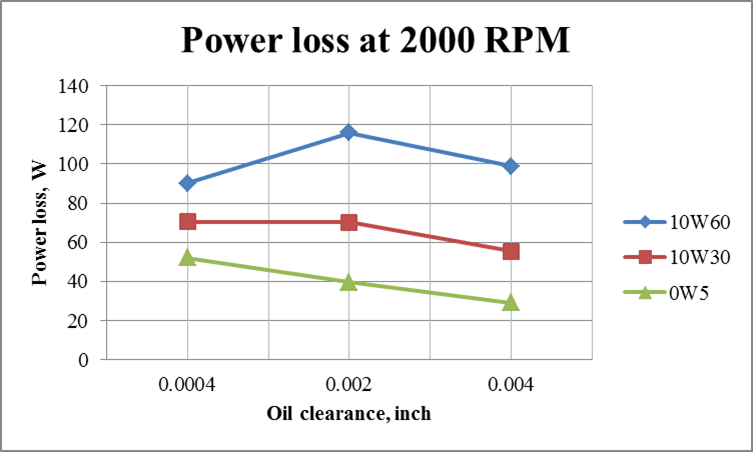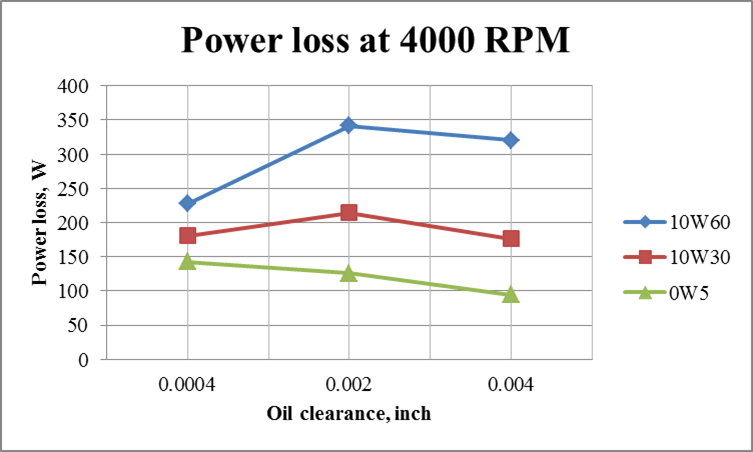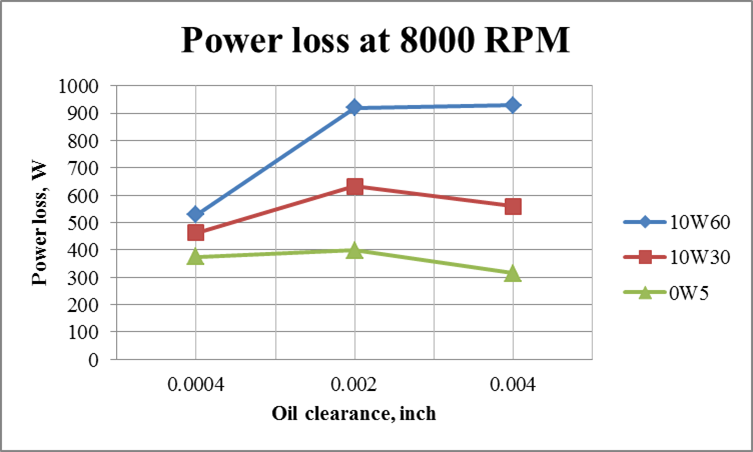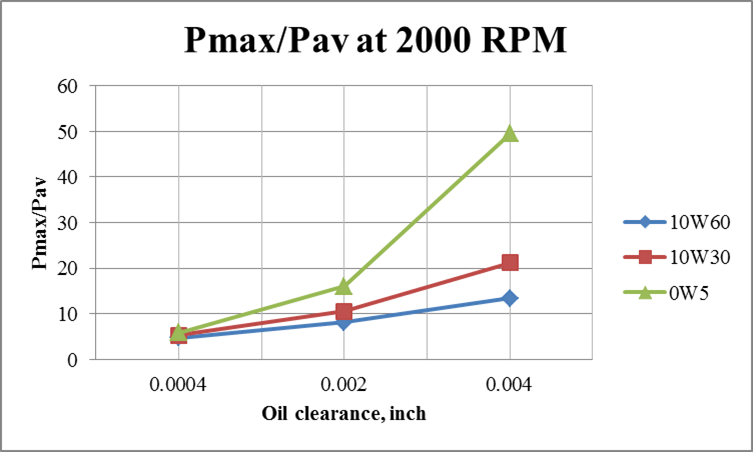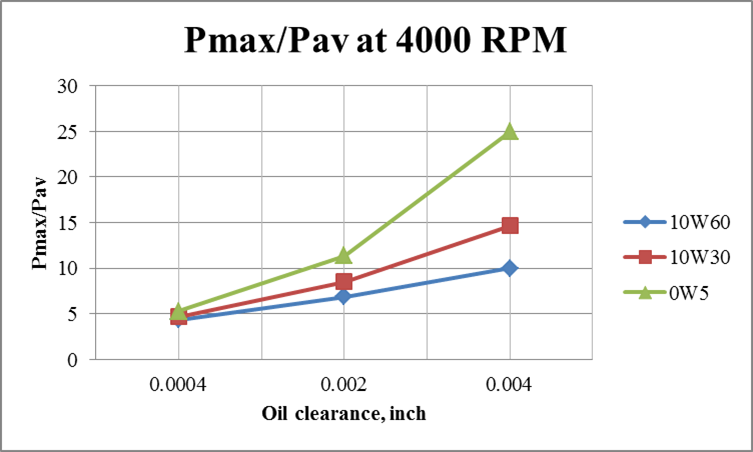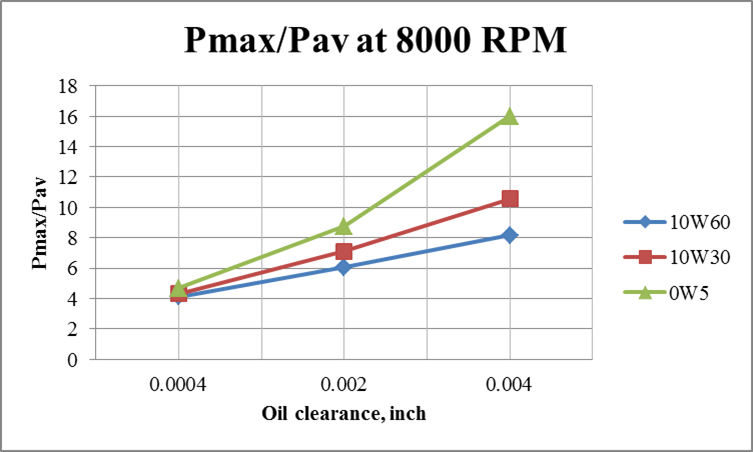Main page
About us
Sliding Bearings Consulting
Advertising Opportunities

SubsTech’s sister website Smooth Sliding provides independent engineering consulting services that help you to solve engine bearing related issues: failures, material selection, geometry design and optimization of hydrodynamic conditions.
Smooth Sliding is an engineering consulting company run by Dr. Dmitri Kopeliovich:
- VP R&D of King Engine Bearings.
- World leading expert (32 years of experience) in design, technology and materials for Engine bearings in applications such as automotive, renewable energy, aviation, racing and others.
- Founder and owner of SubsTech (Substances & Technologies) – a leading professional website on Materials Science and Engineering.
- Author of numerous scientific and engineering publications and patents.
- Founder and owner of Smooth Sliding.
For further information and for requesting consulting services please visit our sister website Smooth Sliding.
to Metals
to Engine bearings
Effect of oil viscosity on hydrodynamic friction of engine bearings
Introduction
Motor oil is as indispensable to proper engine operation as blood to human body.
Motor oil:
- Lubricates the engine parts: bearings, pistons, valves, cams.
- Cools the engine parts removing heat generated by friction and combustion.
- Protects the engine against corrosion.
- Clean the engine parts washing debris, dust and other contaminants.
Engine bearings operate mostly in a hydrodynamic regime of lubrication, in which the bearing surface is separated from the journal surface by pressurized oil [1]. Parameters of motor oil determine stability of hydrodynamic lubrication, losses of power due to friction, distribution of oil pressure over the bearing surface. The most critical parameter of motor oil is its viscosity. Unfortunately viscosity of motor oils is strongly dependent on temperature. Therefore engine operate differently at different ambient temperatures particularly in cool conditions. The principal geometrical parameter of engine bearing is oil clearance. It is tightly associated with oil viscosity. Generally speaking the greater clearance the more viscose oil should be used. Engine designer have been trying to minimize the losses of power due to friction therefore oil viscosity in modern engine is commonly lower than that in old designs. Particularly such trend is noticeable in racing engines in which the engine builders are fighting to utilize each watt of the engine power for better performance. However low viscosity oils require low oil clearance. Otherwise stability of hydrodynamic lubrication may be disrupted. In this article we consider operation of an engine bearing with different oils in a range of oil clearance at different rotation speeds.
The parameters of hydrodynamic lubrication of bearings [2] were theoretically calculated using software developed by King Engine Bearings. The software, called ENSIM™, is an advanced engine simulation module. It is capable of calculating the thermodynamic, dynamic, hydrodynamic and mechanical parameters of bearing operation. ENSIM™ is used for designing new bearings and for modifying the bearings of existing engines. For the purposes of this theme paper study, calculations of the parameters of hydrodynamic lubrication were made for high performance King CR 807XPN (connecting rod bearing).
All King XP series high performance bearings are manufactured with the pMax Black™ structure and its hardened pMax Black™ overlay [3]. These bearings are easily recognizable by their distinctive dark black color. This is an attribute resulting from King’s proprietary surface hardening process (Fig. 1)
Fig. 1 King pMax Black™ bearing
The working conditions of the calculated bearing were as follows:
Bearing diameter: ~2” (50 mm) Oil types: SAE 10W60, SAE 10W30, SAE 0W5 Oil inlet temperature: 200 °F Bearing loads: 7000 psi Rotation speeds: 2000 RPM, 4000 RPM and 8000 RPM Oil clearances: 0.0004”, 0.002”, 0.004” (0.01 mm, 0.05 mm, 0.1 mm)
The main objective of the calculations was to determine the optimal values of clearance for various oil grades. Such optimal clearance should provide optimal combination of the level of minimum oil film thickness, power losses and distribution of oil pressure over the oil film.
to top
Viscosity grades of motor oils
The Society of Automotive Engineers (SAE) established a viscosity grading system for motor oils.
According to the SAE viscosity grading system all motor oils are divided into two classes: mono-grade and multi-grade [4]:
- Mono-grade motor oils
Mono-grade motor oils are designated by one number (20, 30, 40, 50, etc.). The number indicates a level of the oil viscosity at a particular temperature. The higher the grade number, the higher the oil viscosity. Viscosity of motor oils designated with a number only, without the letter “W” (SAE 20, SAE 30, etc.) was specified at the temperature 212°F (100°C). These engine oils are suitable for use at high ambient temperatures. Viscosity of motor oils designated with a number followed by the letter “W” (SAE 20W, SAE 30W, etc.) was specified at the temperature 0°F (-18°C). The letter “W” means winter. These grades are used at low ambient temperatures.
- Multi-grade motor oils
Viscosity of motor oils may be stabilized by polymeric additives (viscosity index improvers). Viscosity of such engine oils is specified at both high and low temperature. These oils are called multi-grade and they are designated by two numbers and the letter “W” (SAE 5W30, SAE 15W30, SAE 20W50, etc.). The first number of the designation specify the oil viscosity at cold temperature, the second number specifies the oil viscosity at high temperature. For example: SAE 15W30 oil has a low temperature viscosity similar to that of SAE 15W, but it has a high temperature viscosity similar to that of SAE 30. Multi-grade oils are used in a wide temperature range. The most popular multi-grade motor oil in North America is SAE 10W30.
to top
Effect on minimum oil film thickness
The results of the calculation for minimum oil film thickness of the CR 807XPN bearing with three various motor oil grades at three values of the rotation speed (2000, 4000 and 8000 RPM) are shown in Fig.2.
Fig. 2 Effect of oil viscosity on minimum oil film thickness at 2000, 4000 and 8000 RPM
As seen in the graphs the greater oil viscosity the thicker oil film separating the bearing and the journal surfaces. This conclusion is correct for any rotation speed and any oil clearance value. However the difference between the values of min. oil film thickness increases with an increase of the clearance.
According to the calculation results the most viscose oil 10W60 provides the most stable hydrodynamic regime of lubrication (the greatest value of minimum oil film thickness) with the oil clearance 0.004” (1/500 of the bearing diameter). Only at the rotation speed of 2000 RPM minimum oil film thickness slightly decreases (from 41.6 to 35.0 µinch/1.0 to 0.9 µm) when the clearance is increased from 0.002 to 0.004”.
The behavior of the most fluid oil (0W5) is quite different. At relatively great clearances its viscosity is too low to create hydrodynamic force sufficient for maintaining the required level of min. oil film thickness. This effect is the most prominent at low rotation speed 2000 RPM. The greatest value of oil film thickness is achieved at the lowest clearance of 0.0004” (1/5000 of the bearing diameter).
The oil grade with a moderate viscosity index 10W30 demonstrated the most stable hydrodynamic regime at the clearance value of 0.002” which equals to 1/1000 of the bearing diameter.
to top
Effect on power loss
Commonly the phenomenon of friction is perceived as an action of rubbing of two solid objects over each other. However in the hydrodynamic bearings there is no direct contact between the bearing and journal surfaces. They are separated with a film of fluid lubricant which is adhered to the both surfaces. As the journal surface moves it produces movement of the lubricant. Velocity of the lubricant is varying in the direction across the film thickness. It has the maximum value at the journal surface and gradually decreases to zero at the bearing surface. The oil film may be presented as having many layers moving relatively to each other. Such motion produces a shear force between the adjacent layers. The force contradicts to the rotation of the journal. This force is called hydrodynamic friction. Hydrodynamic friction causes a loss of power which is converted into heat and dissipated in the lubricant, the engine parts and the ambient atmosphere.
The calculation results of the power loss caused by hydrodynamic friction in the bearing operating with different oil grades, at different rotation speeds and different oil clearances are depicted in Fig. 3.
Fig. 3 Effect of oil viscosity on minimum power loss at 2000, 4000 and 8000 RPM
The power loss increases with an increase of the oil viscosity. The effect of such increase is greater at greater clearances. At low oil clearance (tight clearance) the journal rotation causes considerable heating of high viscosity index oils. Therefore their viscosity drops getting close viscosity of the oil with low viscosity index. As a result the power loss at low oil clearance is relatively low for all grades of lubricants.
to top
Effect on oil pressure distribution
The load is applied to a bearing through the oil film separating the bearing and the journal surfaces. The oil film is pressurized by the load but the pressure generated in the film is not uniformly distributed over the bearing surface. It reaches a maximum value close to the area where the oil film thickness has its minimal value. The ratio of the peak pressure to the average value of pressure (Pmax/Pav) characterizes non-uniformity of pressure distribution. Too high value of pressure non-uniformity may cause failure of the bearing due to fatigue of its material [5].
The results of the calculation for oil pressure non-uniformity in the bearing working with three various motor oil grades at three values of the rotation speed and at three different values of bearing clearance are shown in Fig.4.
Fig. 4 Effect of oil viscosity on oil pressure distribution at 2000, 4000 and 8000 RPM
It is seen in the graphs that the lower oil viscosity the higher the Pmax/Pav ratio. It is correct for any rotation speed and any oil clearance values. However the difference between the values of the ratio increases with an increase of the clearance. At minimal clearance of 0.0004” pressure non-uniformity is about 4-5 and does not depend on the oil grade and on the rotation speed. Pmax/Pav ratio for the bearing working with the low viscosity oil grade sharply increases at greater clearance values. High viscosity oil 10W60 produces much slighter dependence of the non-uniformity ratio on the value of bearing clearance.
to top
Conclusions
- The greater oil viscosity the greater minimum oil film thickness, power loss due friction and uniformity of oil film pressure.
- Effect of oil viscosity on min. oil film thickness, power loss and the Pmax/Pav ratio increases with an increase of bearing clearance.
- For the oil 0W5 the greatest value of oil film thickness is achieved at clearance of 0.0004” (1/5000 of the bearing diameter).
- For the oil 10W30 the greatest value of oil film thickness is achieved at clearance of 0.002” (1/1000 of the bearing diameter).
- For the oil 10W60 the greatest value of oil film thickness is achieved at clearance of 0.004” (1/500 of the bearing diameter).
References
[1] Dudley D. Fuller (1958), A Survey of Journal Bearing Literature, Amer. Soc. of Lubricating Engineers
[2] J.E. Shigley (1986), Mechanical engineering design, McGraw-Hill Book Company
[3] Dmitri Kopeliovich (2016), pMax Black™ - Strengthened Tri-metal Bearing Materials for High Performance Bearings, SubsTech (Substances&Technologies), Available from http://www.substech.com/dokuwiki/doku.php?id=pmax_black_-_strengthened_tri-metal_bearing_materials_for_high_performance_bearings
[4] Dmitri Kopeliovich (2016), Engine oils, SubsTech (Substances&Technologies), Available from http://www.substech.com/dokuwiki/doku.php?id=engine_oils
[5] Dmitri Kopeliovich (2016), Engine bearing failure, SubsTech (Substances&Technologies), Available from http://www.substech.com/dokuwiki/doku.php?id=engine_bearing_failure
Related internal links
to Metals
to Engine bearings



